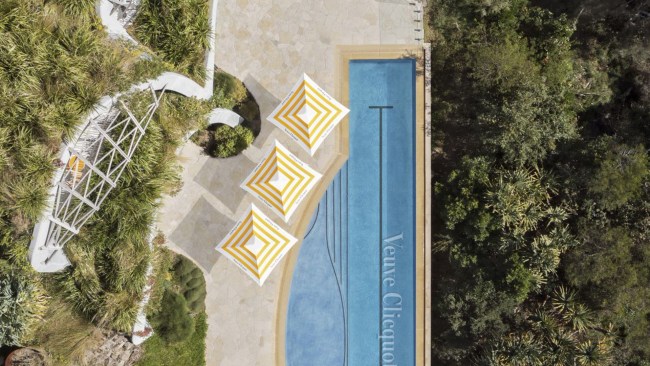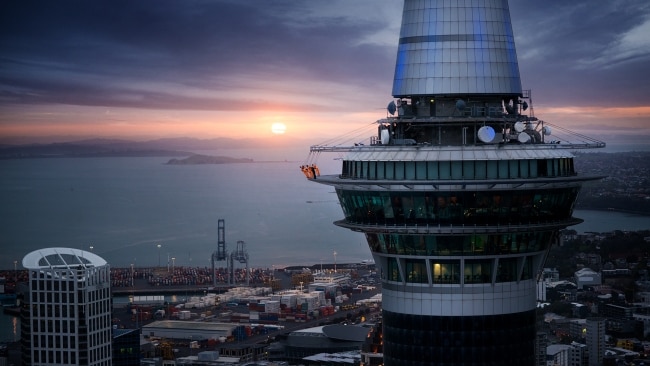Off the grid amidst the sounds of silence in Karijini National Park
AN adventure-packed trip to Karijini National Park is also about digital detox.

I AM leaning against a slab of sun-warmed rock that is more than 2500 million years old on an island in a gorge in a national park in the remote northwest of Western Australia.
It’s not what you’d call a stressful city environment. The only crowds in Karijini National Park are the flocks of corellas wheeling and screeching like socialites at a cocktail party. Heavy traffic means a caravan lumbering along a corrugated road and a smart phone is a Telstra public booth that’s eluded vandals.
But it’s not relaxing enough for my guide, Pete West, the owner of West Oz Active. “We’re going to sit here for five minutes and we’re just going to be silent,’’ instructs West. “Call it meditation, call it what you like.’’
I’ve come a long way to be silent. Three days earlier, I joined the tour in Exmouth, 700km away. Our group made the big jump inland to Karijini in one day with West behind the wheel of the minibus for the whole journey.
I’d feared this leg of the trip for one reason — roadhouse food. Wholemeal bread is still cutting-edge at the remote fuel stops that dot Western Australia.
But West has a weapon in the catering department, and her name is Karen Suzuki. At a roadside stop in the precious shade of a stand of eucalypts, Japanese-born Suzuki soaks rice noodles in water, then tosses them with poached chicken, fresh coriander and sesame oil. We perch on camp stools in a semi-circle and marvel.
Back on the minibus, the Pilbara rolls by and I pass the hours thinking about Gina Rinehart. Her father, Lang Hancock, was flying low over the Hamersley Range in a storm in 1952, so the family legend goes, when he first spotted iron ore here.
Rinehart has since developed her father’s Pilbara leases into multi-billion-dollar mining operations such as Hope Downs and Roy Hill. West’s tours are utterly dependent on mining. Without the commercial flights to and from Paraburdoo, which exist only because of the industry, he’d have no customers.
Karijini National Park is split in two by Rio Tinto’s Marandoo mine and by the rail line that takes the ore northwest to the coast.
We draw nearer the Hamersley Range with each hour. In the late afternoon, snappy gums, bloodwoods and mulga catch the light and a great carpet of golden spinifex glows in the foreground. West briefs us on the next two days: “We’re chasing disconnection, we’re chasing quietness.’’
He means it in a symbolic sense, but when we arrive at Karijini Eco Retreat, some in our group of six are struggling with its literal ramifications. “I hadn’t realised I wouldn’t be able to charge my phone,’’ confides the Instagram addict when she sees the unpowered tents. Staying warm at night means layering thermal underwear and blankets against the desert chill.
At dawn, the view from the tent’s hardwood deck is benign and beautiful, but the red-earth plateau hides many secrets. Erosion by water and wind has resulted in spectacular and unexpected fissures that draw 200,000 visitors to Karijini each year. The park’s seven gorges
are deep, rugged and remote on a scale that leaves tourists in awe and State Emergency Service volunteers on standby.
Falling and flash flooding are the main dangers. Our group visits Oxer Lookout, where a Celtic cross adorns a memorial to an SES volunteer killed in a flash flood while rescuing an injured tourist from Hancock Gorge below. “I’ve been accused of being conservative in the gorges and that’s just fine with me,’’ says West.
Hancock Gorge is named after Lang’s father, George, whose pastoral interests in the region long predated the mining boom. Today our destination within the gorge is Kermit’s Pool, named after the famous television frog.
We climb down two ladders, inch along a ledge, swim through a chasm and “spider-walk’’ along a crack, pressing our hands and feet against the rock for momentum. Then the gorge opens cathedral-like above our heads and shafts of sunlight bounce around Kermit’s Pool.
In the afternoon, West leads our group into Joffre Gorge. Our destination is an island and our mode of transport is inner tube, the mounting of which is less ceremonious than boarding a horse. The idea is that you fall on to it backwards and hope for the best.
Soon we’re propelling ourselves across deep water using hands as flippers. The walls of the gorge rise orange-red and majestic all around, and city life seems a faraway absurdity.
We make landfall, then rock-hop over banded ironstone to a ledge, where we sit and listen to West.
“Let’s dial into the country,’’ he says, looking and sounding not at all like a motivational speaker with his scraggly beard and khaki cut-offs. “Karijini — no internet, no phone, no worries.’’
After five minutes of deliberate silence, no one wants to break the spell. Even the corellas have quietened. But it’s late afternoon and we have a long journey ahead of 2km by inner tube, 2km up a gorge wall on foot and, tomorrow, 130km to Paraburdoo airport, 990km to Perth on a Boeing 717 and, for me, a flight home to the east coast.
I ask West how he came up with the idea for an itinerary based on stillness, when every other tour in the world seems to be about packing maximum activity into every minute.
“In those special moments when I’m not working, I’m seeking out a quiet spot with a paperback in my back pocket,’’ he says. “Listening to trickling water, hearing a willy wagtail, or a crow crowing … that’s what’s valuable to me.’’
● westozactive.com.au
● karijiniecoretreat.com.au


